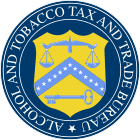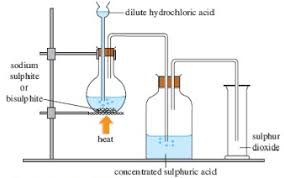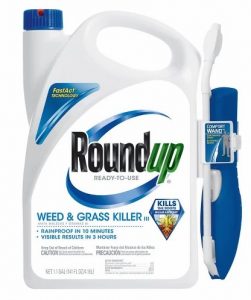(We use non-GMO yeast. None of these other ingredients are added to Barreca Vineyards wine)
What’s in Your Wine?
Although the public is often aware of ingredients in food because of food labeling, the wine industry has consistently obscured the ingredients that may be in your wine. People may have reactions to these ingredients that turn them off from drinking wine completely, but more often the reactions are cumulative rather than immediate and are not noticed. Small organic and regenerative wineries compete against huge operations (The definition of a “Small” winery is 250,000 liters or less.) Moreover those who sell commercial wine and wine-making ingredients claim that not using additives makes “natural wines” inconsistent, potentially fizzy, sour or off-flavored. In my experience, that is simply not true. This paper is an effort to set the record straight about what you are probably drinking in commercial wines and to somewhat level the playing field for small natural wine-makers.
 The Alcohol and Tobacco Tax and Trade Bureau allows over 76 different additives in wine without labeling. They only label sulfites because some people have reactions to them so strong that they could die. While there is not enough room to cover all the ingredients that may be added to wine beyond the raw fruit in a readable document, here are 12 classes of ingredients you should be aware of:
The Alcohol and Tobacco Tax and Trade Bureau allows over 76 different additives in wine without labeling. They only label sulfites because some people have reactions to them so strong that they could die. While there is not enough room to cover all the ingredients that may be added to wine beyond the raw fruit in a readable document, here are 12 classes of ingredients you should be aware of:
- Mega Purple:a super-concentrated grape juice syrup made from grapes with purple flesh. Winemakers add an estimated 10,000 gallons of this stuff to about 25 million bottles of wine per year – even expensive wines. Why? Because Mega Purple is a shortcut that adds a deep, rich color to the wine and also a hint of sweetness to standardize flavor. Winemakers use another concentrate called Ultra Red to manipulate color, taste, and perceived quality. What’s so wrong about adding grape juice concentrates and syrups to wines? In addition to adding extra sugar, adding concentrates have these negative effects:
- It turns your teeth purple.If your smile looks like you just ate a Smurf after you sip your Cabernet, that’s not normal. That’s Mega Purple.
- It stains your rugs, your clothes, your coffee table, or anything it touches. Every wine drinker has done it—tipped the glass and SPLASH, a mad rush to clean red wine from the carpet or the sweater. Red wine doesn’t usually come out without a fight. Most of the time, you can blame the Mega Purple or Ultra Red for the stains, not the wine itself.
- It adds sugar to the wine to the tune of up to 10 grams per liter. If you’re limiting sugar consumption (as I recommend), this sugar adds up quickly and makes hangovers even worse. Mega Purple and Ultra Red are manipulations of wine processing specifically designed to sell more wine, not to improve your health. With a bit of syrup, you can transform a mediocre, weak, inconsistent red wine into a punchy, bold, consistent, high-margin product. [i]
 Sulphur Dioxide: is a preservative that most winemakers use to give their wine stability. But when a wine contains too much sulphur, it can induce asthma and cause a host of other reactions such as dermatitis, hives, flushing, abdominal pain, diarrhea, and hypotension. It is added to wine to kill wild yeasts and favor sulfite-tolerant cultured yeasts. But it is toxic to other biota in your system as well as in the wine itself.
Sulphur Dioxide: is a preservative that most winemakers use to give their wine stability. But when a wine contains too much sulphur, it can induce asthma and cause a host of other reactions such as dermatitis, hives, flushing, abdominal pain, diarrhea, and hypotension. It is added to wine to kill wild yeasts and favor sulfite-tolerant cultured yeasts. But it is toxic to other biota in your system as well as in the wine itself.- Ammonium Sulfates: Ammonium sulfate is potentially dangerous to both people and the environment, so it requires care in its use. It can cause severe irritation and inflammation of the respiratory tract if inhaled. Eating or drinking ammonium sulfate will cause irritation in the gastrointestinal tract like nausea, vomiting, and diarrhea, although it isn’t toxic unless consumed in large quantities. Contact with the skin or eyes will cause irritation, redness, itching, and pain. It may also be a neurotoxin, meaning it can cause confusion and behavioral changes.
- Commercial Yeasts: Some of these yeasts have been genetically modified. These yeasts release histamine during the fermentation process. Histamine, of course, is the chemical that sets off allergy symptoms.
 Sugar: Although sugar is frowned upon as an additive, (Winemakers won’t really call it “adding sugar”, it is referred to as “chaptalization”.) It is added to offset incomplete ripeness and can lead to hangovers and addiction. In fact, scientists have now discovered that sugar is more addictive than cocaine or heroin! When you eat processed white sugar your body THINKS it’s getting the nourishment it needs. When it’s left lacking the essential nutrients it was expecting, it just begs for more.[ii]
Sugar: Although sugar is frowned upon as an additive, (Winemakers won’t really call it “adding sugar”, it is referred to as “chaptalization”.) It is added to offset incomplete ripeness and can lead to hangovers and addiction. In fact, scientists have now discovered that sugar is more addictive than cocaine or heroin! When you eat processed white sugar your body THINKS it’s getting the nourishment it needs. When it’s left lacking the essential nutrients it was expecting, it just begs for more.[ii]- Fungicides: Yeast is closely related to fungus. Biocidal chemical compounds or biological organisms are used to kill parasitic fungi or their spores. A fungistatic inhibits their growth. These compounds also kill organisms in your gut that you need for nutrition.
- Mycotoxins: These include the fumonisins, which affect the nervous systems of horses and may cause cancer in rodents; the trichothecenes, which are most strongly associated with chronic and fatal toxic effects in animals and humans.
- Phthalates: A family of industrial chemicals used to soften PVC plastic and as solvents in cosmetics and other consumer products, can damage the liver, kidneys, lungs, and reproductive system — particularly the developing testes — according to animal studies. Human health effects from exposure to low levels of phthalates are unknown. Some types of phthalates have affected the reproductive system of laboratory animals. More research is needed to assess the human health effects of exposure to phthalates.
 Roundup: The past few years have revealed some disturbing news for the alcohol industry. In 2015, CBS news broke the announcement of a lawsuit against 31 brands of wines for high levels of inorganic arsenic. In 2016, beer testing in Germany also revealed residues of glyphosate in every single sample tested, even independent beers. Moms Across America released test results of 12 California wines that were all found to be positive for glyphosate in 2016. Ecowatch tested further and released new findings of glyphosate in all of the most popular brands of wines in the world, the majority of which are from the U.S. and in batch test results in American beer. [iii] Other activator chemicals in Roundup have been shown to be much more toxic than glyphosate alone especially when used in combination with it. There is no safe minimum amount.
Roundup: The past few years have revealed some disturbing news for the alcohol industry. In 2015, CBS news broke the announcement of a lawsuit against 31 brands of wines for high levels of inorganic arsenic. In 2016, beer testing in Germany also revealed residues of glyphosate in every single sample tested, even independent beers. Moms Across America released test results of 12 California wines that were all found to be positive for glyphosate in 2016. Ecowatch tested further and released new findings of glyphosate in all of the most popular brands of wines in the world, the majority of which are from the U.S. and in batch test results in American beer. [iii] Other activator chemicals in Roundup have been shown to be much more toxic than glyphosate alone especially when used in combination with it. There is no safe minimum amount.- Synthetic fertilizers: Although not added directly to wine 99%+ of U.S. vineyards are irrigated and fed synthetic fertilizers. They are “Man made” inorganic compounds – usually derived from by-products of the petroleum industry. Examples are Ammonium Nitrate, Ammonium Phosphate, Superphosphate, and Potassium Sulfate. [iv] Because they are in the vineyard, they end up in commercial wine.
- Fining Agents: These products clear wine of cloudiness faster than allowing natural clearing to occur over a couple of years or in cases where something has gone wrong with the fermentation.
- Isinglass is a by-product of a food fishery done in South America. The fish in question is a fresh water species of whitefish, technically known as a ‘Cichlid’. The swim bladders are harvested and dried, and later shipped to North America. Here they are purified, dried again with liquid nitrogen, pulverized to a powder, and then mixed into a low-pH solution to be used as finings. The whitefish used to make isinglass is a scaled fish, rather than a shellfish.
- Chitosan: Even though the raw material in Chitosan is derived from shellfish, the way it is processed completely destroys all proteins. Proteins are the compounds that cause the allergic reaction to shellfish in human beings, so if there are no proteins, people will experience no reaction.
- Bentonite: is a type of clay, known as aluminosilicate. Its technical name is Montmorillonite. It’s found with various minerals attached to it, such as sodium, calcium and magnesium. It was originally found in Fort Benton, Wyoming (where the name came from). It’s used in winemaking, beauty treatments, mineral extraction, water treatment, and kitty litter.
 Other of allowed substances: This by no means exhausts the lists of substances added to commercial wines. These include copper sulfate, magnesium sulfate, polyvinyl-pyrrolidone (PVP)/ polyvinylimadazole (PVI) polymer, pyridoxine (pyridoxine hydrochloride), Sodium carboxymethyl cellulose and other materials not forbidden by the Food and Drug Administration. i
Other of allowed substances: This by no means exhausts the lists of substances added to commercial wines. These include copper sulfate, magnesium sulfate, polyvinyl-pyrrolidone (PVP)/ polyvinylimadazole (PVI) polymer, pyridoxine (pyridoxine hydrochloride), Sodium carboxymethyl cellulose and other materials not forbidden by the Food and Drug Administration. i
Commercial winemakers artificially manipulate flavor profiles of their wine to make their products more marketable and profitable… just like junk-food marketers. So the next time you reach for a bottle of “3 Buck Chuck” or 14 Hands, consider that there is more to good wine than taste, color, clarity and consistency. Until there is complete ingredient labeling on wine you won’t know exactly what you are ingesting. Give “natural wines” a chance even if, like organic foods, they cost a little bit more.
[i] https://www.ttb.gov/wine/wine_treating_materials.shtml
[ii] https://fatburningman.com/4-simple-hacks-to-stop-sugar-cravings/
[iii] https://www.ecowatch.com/glyphosate-wine-beer-testing-2553632957.html
[iv] https://fatburningman.com/is-red-wine-good-or-bad-shocking-additives-hidden-in-lab-tested-wines/
